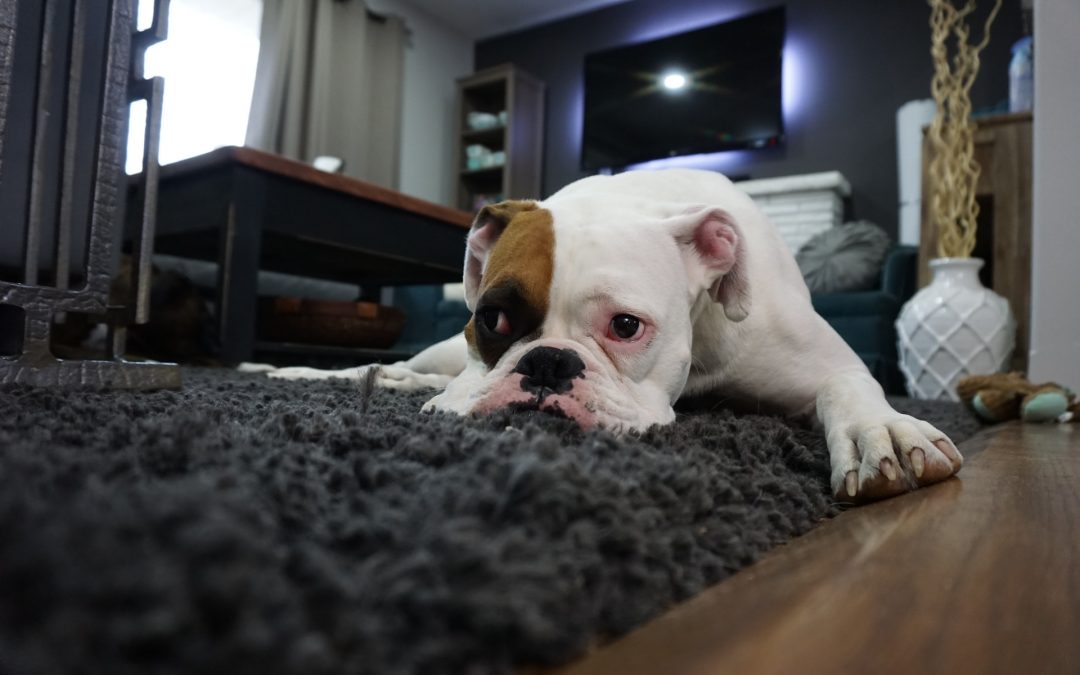Moving is stressful for everyone, including pets. Dogs are creatures of habit that thrive on routine and familiarity. So, when their comfort zone suddenly begins to shift as you pack up one home to prepare for another, dogs can become anxious and exhibit unexpected behaviors. Help your dog make the transition with these tips for before, during, and after the move.
Prepare Your Dog Before the Move
The goal here is to prevent your dog from feeling like their world is being turned upside down.
In addition to trying to maintain your dog’s routine – feeding times, walks, playtime and so forth – try the following:
- If at all possible, pack slowly over time. The slow disappearance of household items into stacks of boxes will be less threatening if it occurs a little bit each day rather than all of the sudden over a week or weekend.
- If you do have to pack quickly, consider booking a trusted pet sitter or in-home daycare provider for your dog that day.
- Leave one room – the one your dog spends the most time – intact as long as possible so that your dog has a consistent “safe zone” throughout the packing process.
- Set aside your dog’s favorite items such as a dog bed or blanket, favorite toys (especially a food puzzle toy) and some high-value treats to provide a consistent presence throughout the packing, moving, and unpacking transition.
- If you have access to your new home before you move, bring your dog for a visit (or several) while the house is still empty. Let them investigate and smell the new smells on their own and provide them with some fun playtime in the new space.
What to Do with Your Dog During the Move
The goal during the move should be simply to safely keep your dog out of the way and as relaxed as possible.
- The best option is to arrange for your dog to stay with a friend, a dog sitter or at doggy daycare the day of the move. This way, they avoid the stress of the dismantling of their life and start fresh in the new home once all of the items have been transferred inside.
- If arranging for a day out is not possible, you will want to select a room with a door (or a gated yard) for your dog to safely inhabit while you are moving. Remove as many items from that space as possible before the movers arrive and place your dog’s bed and other comfort items in the room. Keep the room as quiet as possible by turning on some white noise.
- For a little extra comfort, turn on a separate device with soothing piano music and use a ThunderShirt and/or DAP collar or diffuser. Fill up a puzzle toy with extra delicious treats and leave it for your dog before you close the door.
How to Help Your Dog Adjust After the Move
The goal after the move is to introduce your dog to the new house while easing their alarm over the chaos of moving supplies.
- As soon as all of your items have been moved inside but before you’ve let your dog in, set up a safe space for your dog (preferably in a room that they will later be spending a lot of time in) similar to the space you set up during the move. Make sure this room has your dog’s comfort items, white noise and other calming elements, and delicious puzzle toy options.
- The first time you bring your dog inside after the move, arm yourself with a bag full of high-value treats (a.k.a., human-grade goodies like hot dogs or chicken cut into tiny pieces). Guide your dog through the house dropping the treats like breadcrumbs along the way. Happy talk to your dog as you go to reassure them that this new place is fun!
- If your dog balks in any area of the home, do not force them to enter or investigate. You can try throwing some high-value treats in that direction, but if that doesn’t work, move on. Allow your dog the space and time to make friends with your new home on their own. The use of force will only make them more fearful.
- Use your safe space judiciously, any time you need your dog to be safely out of the way or while you are noisily setting up or unpacking items.
Featured image: Best Friend’s Home Dog Houses

